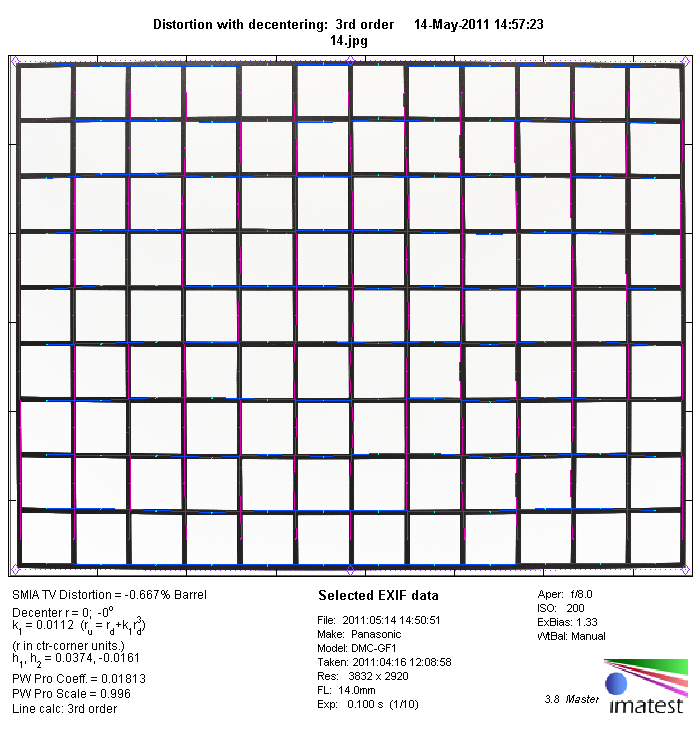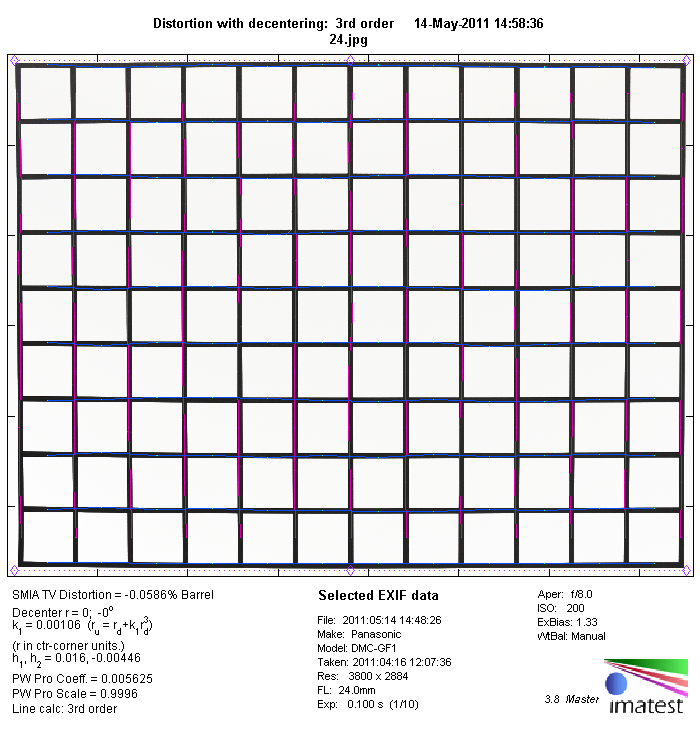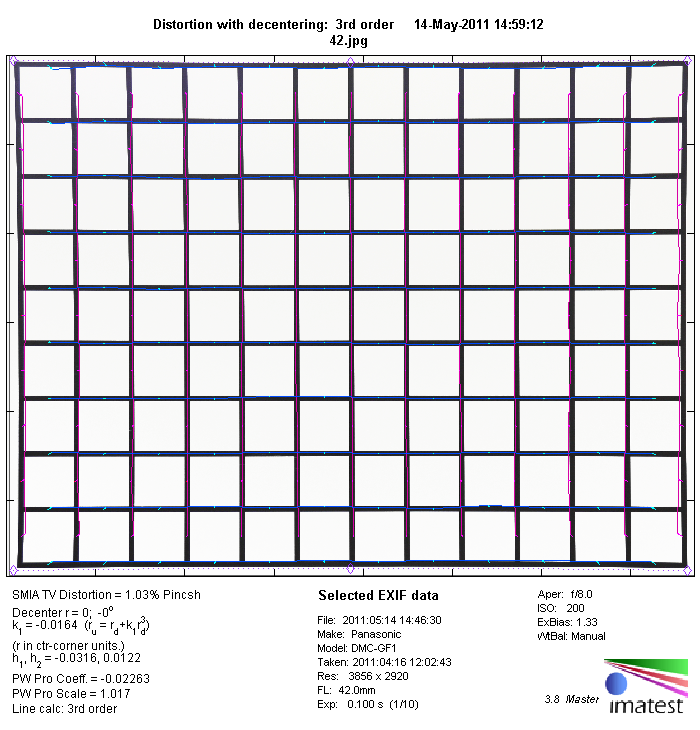|
Page 2 of 3

Distortion
The image distortion produced by micro 4/3 images is auto-corrected either directly in the camera (JPEGs) or in most RAW-converters. The "exposed" distortion is therefore very moderate especially for a standard kit lens. They range from a moderate (~0.67%) barrel distortion at 14mm to marginal pincushion distortion at 42mm. This is nothing to worry about from a field perspective.
However, the non-corrected raw images show a pretty different situation with a very heavy (~4.97%) barrel distortion at 14mm.
If you move your mouse cursor over the image you can switch to the corresponding non-corrected results.



Vignetting
The kit lens has a fairly mediocre vignetting characteristic. The following figures show the corresponding performance of auto-corrected JPEGs obtained straight from the camera compared to non corrected raw files.
At 14mm and f/3.5 the amount of vignetting is around ~1.2EV which is heavy as well as easily noticeable in field images. Nevertheless, the situation improves significantly when stopping down to f/4.5 and it's not really an issue any more from f/5.6 onwards. The same applies throughout the whole focal length with one exception as there is still slight vignetting at 42mm and f/5.6.
However, it's no surprise that the non-corrected images show consistently worse results particularly at 14mm.
The following graphs compare the vignetting characteristic of auto- and non-corrected files between 14 and 42mm from open aperture to f/11.
The following images illustrate the above mentioned heavy vignetting at 14mm.
MTF (resolution)
The Lumix lens produced very respectable resolution figures in the MTF lab. The center performance is generally very good to excellent whereas the border quality is on a very good level. This is pretty impressive for such an affordable lens actually.
Please note that the MTF results are not directly comparable across the different systems!
Below is a simplified summary of the formal findings. The chart shows line widths per picture height (LW/PH) which can be taken as a measure for sharpness.
If you want to know more about the MTF50 figures you may check out the corresponding Imatest Explanations
Chromatic Aberrations (CAs)
Lateral CAs (color shadows at harsh contrast transitions) are well controlled reaching a maximum of about 1px at the image borders for auto- and non-corrected files. However, while the non-corrected results improve only slightly when stopping down, the auto-corrected files reach good values of around 0,2px at f/8.0.
|